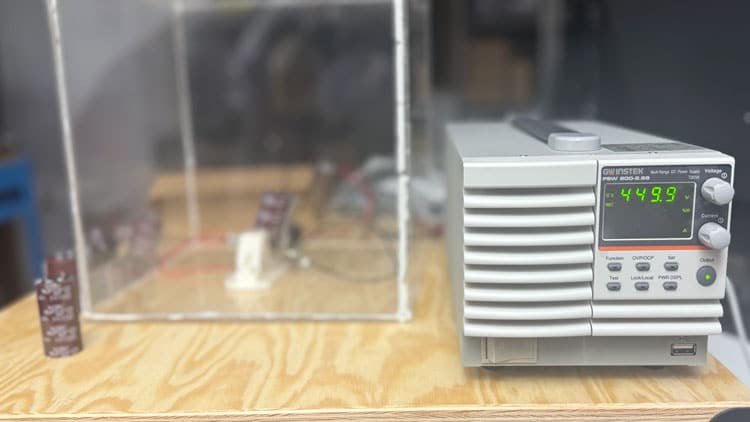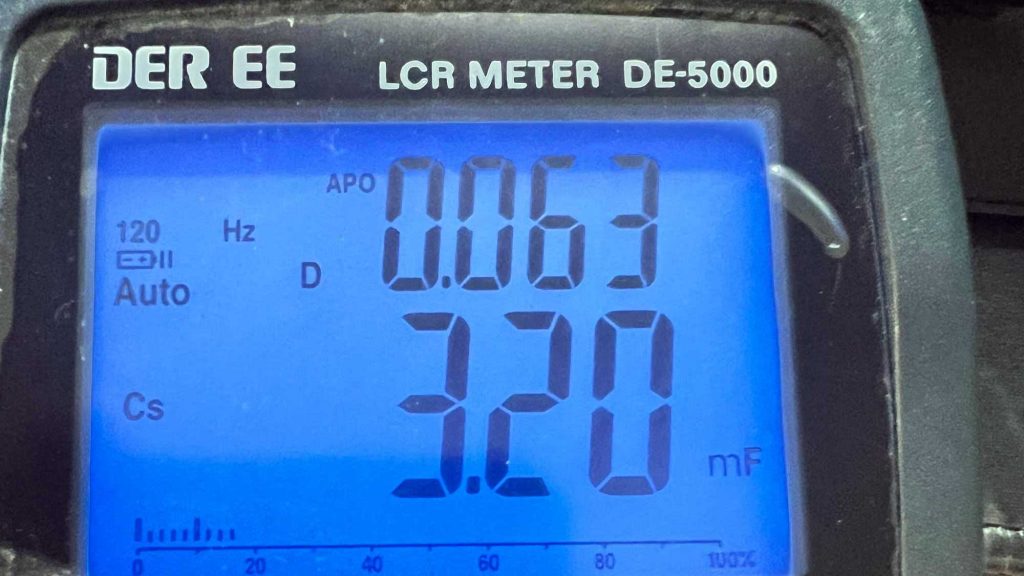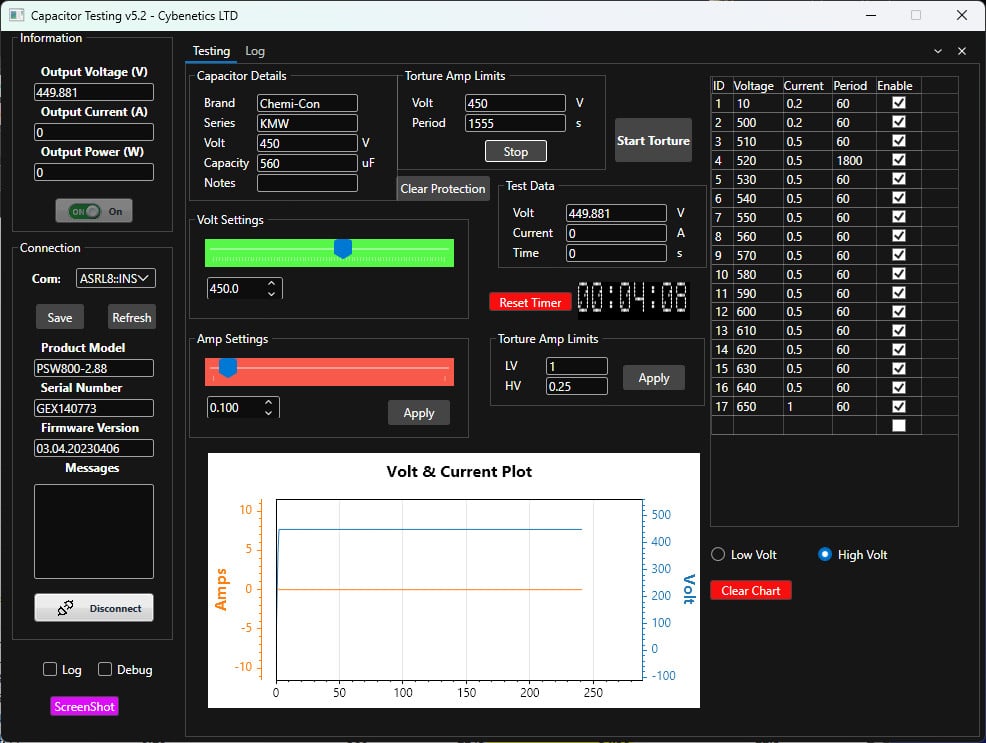Methodology
My methodology is simple but effective. Each testing session doesn’t require much time, allowing me to proceed quickly with the samples I have in hand.
The first thing I do is the voltage treatment process, where I connect a resistor in series to the capacitor and apply its maximum rated voltage for a 30-minute period. This process brings the capacitor to its best form and prepares it for the following tests.
Right after the voltage treatment, I measure the capacitor’s capacity at 120 Hz using a DER EE LCR Meter DE-1000 instrument. This is an inexpensive but reliable and accurate enough instrument. Note that I measure all caps at the same frequency (120 Hz) for comparable results.
From December 2024, I also take the following readings using the same instrument:
- dissipation factor (D)
- quality factor (Q)
- ESR (1 KHz)
Briefly:
- The dissipation factor indicates the inefficiency of material in holding energy or acting as an insulating material. The lower the dissipation factor, the more efficient the insulator system. – Lower is Better
- Q factor tells us how good a capacitor performs at a specific frequency.- Higher is Better
- Equivalent series resistance (ESR), or internal resistance, represents the loss of useful energy in a simple electronic circuit consisting of a resistor and an ideal (perfect) capacitor. – Lower is Better
Low Voltage Capacitors Torture Testing
It is time for the actual tests after the voltage treatments and the measurements described above. I start overvolting the capacitor with 20% steps for five-minute periods while trying to keep an ambient temperature of 25C (+-2). I wrote a special application for this purpose, so I don’t have to supervise the procedure.
- 19.2V – 5 Minutes
- 22.4V – 5 Minutes
- 25.6V – 5 Minutes
- 28.8V – 5 Minutes
- 32V – 5 Minutes
- 35.2V – 5 Minutes
- 38.4V – 5 Minutes
- 41.6V – 5 Minutes
- 44.8V – 5 Minutes
Starting from the 120% voltage rating, we measure the time the cap stays alive. By comparing each capacitor’s operational time, I can easily determine the best and by what degree!
High Voltage Capacitors Torture Testing
High-voltage capacitors are used in a PSU’s APFC circuit as bulk caps. I borrowed Great Wall’s testing methodology for these capacitors since these guys do this forever and were kind enough to show me the exact measurements they conduct.
The test plan is shown on the app’s right Datagrid. We start at just 10V, increase at 500V, and remain for an extended period at 520V. According to Great Wall, this is the best way to determine which capacitor lasts longer.





How do Teapo fair under this criterion?
they are pretty good. Check the Cybenetics capacitor database for more details.
Teapo хороши? Электролиты от них чаще всего в БП менять приходится – основная статья расходов в БП на прямоходе. В резонансниках они конечно держаться дольше.
Teapo caps are good overall.
You can call this a test, but has little to do with capacitor testing and real life expectations.
For each test, no matter what, there are people with experience who design the test methodology and simulate real life event and even aging. I can tell this from automotive fields, you cannot test a device 10 years to see how it is behaving, so we had a test plan designed by some people who can simulate the aging in real life, in just 10 days or so, usually by exacerbating the conditions of test.
Some tests were based on complicated math formulas and we had to follow those in details: hours of exposure, temperatures, vibrations, etc.
Also, what I heard from an old man in technical fields, mostly computers: the name of the company is not relevant anymore when it comes about quality. You have to hold the products in your hands and test them by yourself – mostly what you do with power supplies.
I’m curious about the results, Aris.